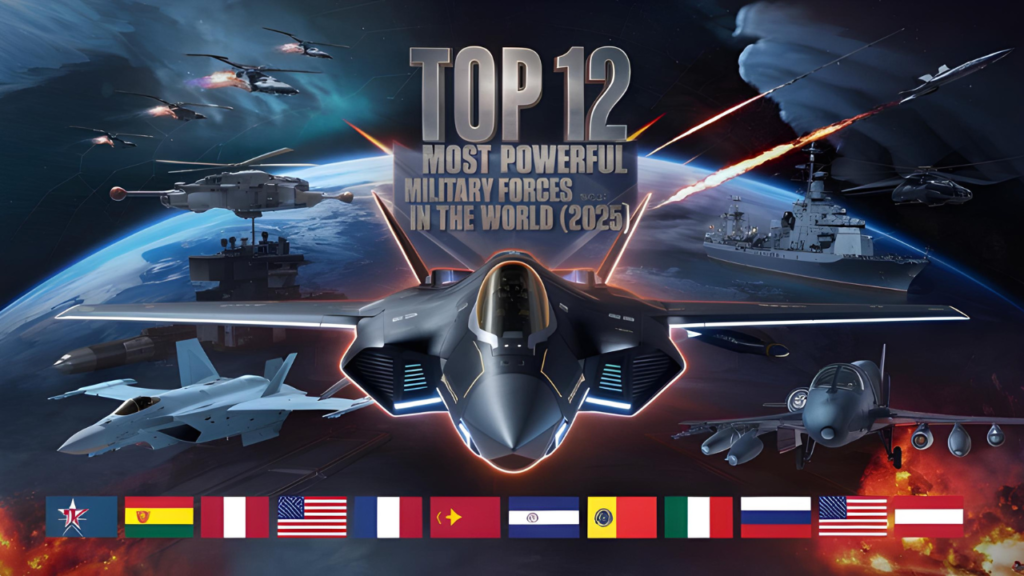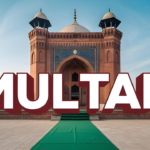In an ever-changing global landscape, military strength remains a crucial factor in shaping international relations and maintaining national security. As we approach 2025, the balance of power continues to shift, with some nations rising through the ranks while others maintain their longstanding positions. This comprehensive analysis offers an in-depth look at the Top 12 Most Powerful Military Forces in the World that dominate the world stage, exploring their strengths, weaknesses, and the factors that contribute to their military might.
Read More: Travel
Top 12 Most Powerful Military Forces in the World (2025)
Explore the top 12 military powers of 2025, featuring detailed insights into their strengths, capabilities, and global influence. Discover how nations like the United States, China, and India shape the future of military power.
1. United States of America: The Unrivaled Superpower
The United States continues to hold its position as the world’s preeminent military force in 2025. With an unparalleled defense budget that dwarfs that of its closest competitors, the U.S. military maintains its edge through continuous innovation and modernization efforts.
Key Strengths:
- Massive Defense Budget: The U.S. allocates over $700 billion annually to defense, allowing for significant investments in research, development, and maintenance of cutting-edge military technologies.
- Technological Superiority: From stealth aircraft to advanced cyber capabilities, the U.S. leads in military technology.
- Global Presence: With military bases spanning the globe, the U.S. can project power and respond rapidly to crises worldwide.
- Highly Trained Personnel: The U.S. military boasts some of the best-trained and most experienced soldiers, sailors, airmen, and marines in the world.
Notable Assets:
- 11 nuclear-powered aircraft carriers
- Over 1,000 fourth and fifth-generation fighter aircraft
- A submarine fleet of unparalleled stealth and capability
- The world’s most advanced missile defense systems
Challenges:
Despite its overwhelming strength, the U.S. military faces challenges, including:
- Aging infrastructure in some sectors
- The need to adapt to emerging threats like cyber warfare and space-based conflicts
- Potential overextension due to global commitments
As we move further into the 2020s, the United States remains committed to maintaining its military superiority. Investments in artificial intelligence, quantum computing, and hypersonic weapons aim to keep America at the forefront of military technology.
2. China: The Rising Dragon
China’s rapid military modernization has solidified its position as the second most powerful military force in the world. With the world’s largest standing army and a growing naval presence, China is increasingly capable of projecting power beyond its borders.
Key Strengths:
- Massive Manpower: With over 2 million active personnel, China boasts the world’s largest military in terms of sheer numbers.
- Growing Naval Capabilities: China’s navy has expanded rapidly, with a particular focus on aircraft carriers and advanced submarines.
- Technological Advancements: Significant investments in areas like artificial intelligence, hypersonic weapons, and space technology have boosted China’s military capabilities.
- Strategic Focus: China’s military strategy is closely aligned with its geopolitical ambitions, particularly in the South China Sea and Taiwan Strait.
Notable Assets:
- Two operational aircraft carriers with more under construction
- A growing fleet of stealth fighter jets, including the J-20
- Advanced anti-ship ballistic missiles, dubbed “carrier killers”
- An extensive network of military bases and installations across the South China Sea
Challenges:
- Limited combat experience compared to some other major powers
- Ongoing tensions with neighboring countries and the international community over territorial disputes
- The need to balance military spending with economic development priorities
China’s military ambitions show no signs of slowing down as we approach 2025. The country continues to invest heavily in its naval capabilities, aiming to challenge U.S. dominance in the Pacific region. Additionally, China’s focus on “informationized warfare” emphasizes the integration of advanced technologies across all branches of its military.
3. Russia: The Resurgent Power
Despite economic challenges, Russia maintains its position as a top-tier military power in 2025. Its vast nuclear arsenal, combined with a focus on hybrid warfare and cyber capabilities, ensures Russia’s place among the world’s most formidable military forces.
Key Strengths:
- Nuclear Deterrent: Russia possesses the world’s largest nuclear arsenal, serving as a powerful deterrent.
- Advanced Air Defense Systems: Systems like the S-400 and S-500 are considered among the best in the world.
- Hybrid Warfare Expertise: Russia has demonstrated proficiency in combining conventional military tactics with cyber operations and information warfare.
- Arctic Capabilities: As climate change opens up new opportunities in the Arctic, Russia leads in military capabilities in this harsh environment.
Notable Assets:
- Over 6,000 nuclear warheads
- Advanced submarine fleet, including the Yasen-class attack submarines
- The formidable T-14 Armata tank platform
- Hypersonic missile systems like the Avangard
Challenges:
- Economic constraints limiting some modernization efforts
- Demographic issues affecting military recruitment and retention
- International sanctions impacting access to certain technologies
As we look towards 2025, Russia continues to focus on asymmetric capabilities to offset the conventional military superiority of NATO. Investments in electronic warfare, unmanned systems, and precision-guided munitions aim to enhance Russia’s ability to project power and defend its interests.
4. India: The Emerging Giant
India’s military prowess continues to grow as we approach 2025, with significant investments in modernization and indigenous defense production. As a regional power with global ambitions, India’s military strength plays a crucial role in shaping the geopolitics of South Asia and the Indian Ocean region.
Key Strengths:
- Large and Diverse Armed Forces: With over 1.4 million active personnel, India maintains one of the world’s largest military forces.
- Nuclear Triad: India possesses air, land, and sea-based nuclear delivery systems, enhancing its strategic deterrence.
- Growing Indigenous Defense Industry: Initiatives like “Make in India” have boosted domestic production of military equipment.
- Strategic Partnerships: Collaborations with countries like the U.S., Russia, and France have enhanced India’s military capabilities.
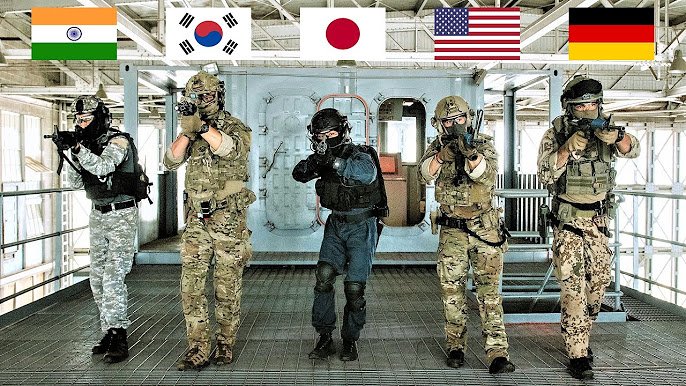
Notable Assets:
- Aircraft carrier INS Vikrant, showcasing India’s naval ambitions
- Agni series of ballistic missiles, capable of striking targets across Asia
- Su-30MKI fighter jets, forming the backbone of India’s air superiority
- Advanced submarines, including nuclear-powered INS Arihant
Challenges:
- Bureaucratic hurdles in procurement and modernization processes
- Balancing military spending with other national development priorities
- Managing tensions with neighboring Pakistan and China
Looking ahead to 2025, India continues to focus on enhancing its naval capabilities to assert its role as the predominant maritime power in the Indian Ocean. Investments in cyber warfare, space technology, and unmanned systems are also key priorities as India seeks to modernize its armed forces for 21st-century challenges.
5. United Kingdom: Punching Above Its Weight
The United Kingdom maintains its position as a top-tier military power in 2025, leveraging its technological expertise, highly trained personnel, and global alliances to project influence far beyond its borders.
Key Strengths:
- Advanced Naval Capabilities: The Royal Navy, with its new Queen Elizabeth-class aircraft carriers, remains a formidable force.
- Elite Special Forces: The SAS and SBS are renowned worldwide for their expertise and effectiveness.
- Strong Alliances: As a key NATO member and close U.S. ally, the UK benefits from extensive military cooperation.
- Cyber Warfare Expertise: The UK has invested heavily in offensive and defensive cyber capabilities.
Notable Assets:
- Two Queen Elizabeth-class aircraft carriers
- F-35B Lightning II stealth fighters
- Astute-class nuclear-powered submarines
- Trident nuclear deterrent
Challenges:
- Budget constraints affecting some modernization programs
- Recruitment and retention issues in certain military specialties
- Balancing global commitments with available resources
As we approach 2025, the UK continues to adapt its military strategy to address emerging threats. Investments in artificial intelligence, unmanned systems, and space-based capabilities aim to keep Britain at the forefront of military innovation.
6. France: The European Military Leader
France maintains its position as one of Europe’s leading military powers in 2025, with a focus on strategic autonomy and rapid deployment capabilities.
Key Strengths:
- Nuclear Deterrent: France’s independent nuclear arsenal provides strategic depth.
- Expeditionary Capabilities: The French military is well-equipped for rapid deployment to global hotspots.
- Advanced Aerospace Industry: French-made fighter jets and helicopters are among the best in the world.
- Strong Naval Presence: The French Navy plays a crucial role in protecting national interests and maintaining global influence.
Notable Assets:
- Charles de Gaulle aircraft carrier
- Rafale multi-role fighter jets
- Mistral-class amphibious assault ships
- Barracuda-class nuclear attack submarines
Challenges:
- Balancing military spending with other national priorities
- Managing multiple ongoing overseas operations
- Adapting to new threats in the Sahel region and beyond
Looking towards 2025, France continues to invest in next-generation technologies, including AI-driven combat systems and enhanced space capabilities, to maintain its military edge.
7. Japan: The Technological Powerhouse
Japan’s Self-Defense Forces have evolved significantly, becoming one of the most technologically advanced militaries in the world by 2025.
Key Strengths:
- Cutting-Edge Technology: Japan’s military benefits from the country’s world-class tech industry.
- Strong Naval and Air Forces: Japan’s navy and air force are among the most capable in Asia.
- Missile Defense Systems: Advanced systems to counter threats from regional adversaries.
- Close Alliance with the U.S.: Enhances Japan’s security and provides access to advanced military technologies.
Notable Assets:
- Izumo-class helicopter destroyers (converted to light aircraft carriers)
- F-35 stealth fighters
- Soryu-class submarines, among the world’s most advanced diesel-electric subs
- Aegis Ashore missile defense systems
Challenges:
- Constitutional limitations on military operations
- Aging population affecting recruitment
- Managing tensions with neighboring countries, particularly China and North Korea
As we approach 2025, Japan continues to expand its military capabilities while navigating complex regional dynamics. Investments in space-based systems, cyber warfare capabilities, and unmanned technologies are key focus areas.
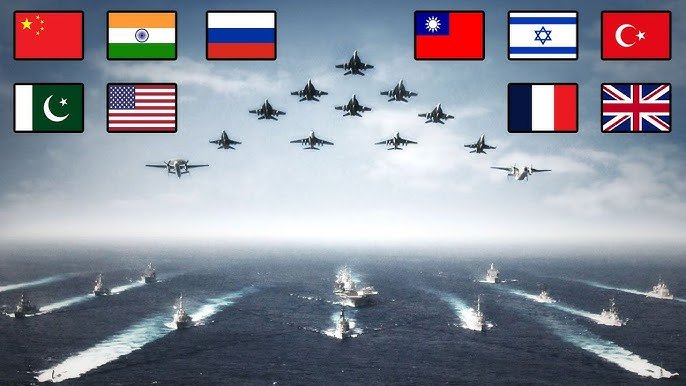
8. South Korea: The Tech-Savvy Defender
South Korea’s military has become increasingly sophisticated, leveraging the country’s technological prowess to develop advanced defense systems.
Key Strengths:
- Advanced Indigenous Defense Industry: Produces a wide range of military equipment, from tanks to warships.
- Strong Cyber Warfare Capabilities: Developed in response to threats from North Korea.
- Well-Trained Personnel: Mandatory military service ensures a large pool of trained reservists.
- Close Alliance with the U.S.: Provides additional security guarantees and access to advanced military technologies.
Notable Assets:
- K2 Black Panther main battle tanks
- KF-21 Boramae indigenous fighter jet program
- Dokdo-class amphibious assault ships
- Advanced missile defense systems, including THAAD
Challenges:
- Ongoing tensions with North Korea
- Demographic challenges affecting long-term military manpower
- Balancing military modernization with other national priorities
Looking ahead to 2025, South Korea continues to invest in autonomous systems, AI-driven battlefield management, and enhanced missile defense capabilities to counter evolving regional threats.
9. Israel: The Innovation Hub
Israel’s military remains one of the most technologically advanced and battle-tested forces in the world as we approach 2025.
Key Strengths:
- Cutting-Edge Military Technology: Israel is a leader in areas such as drone warfare and missile defense.
- Highly Trained Personnel: Mandatory service and frequent operations ensure a skilled and experienced force.
- Strong Intelligence Capabilities: Mossad and other agencies provide crucial support to military operations.
- Iron Dome and Other Missile Defense Systems: Provide a multi-layered defense against various missile threats.
Notable Assets:
- F-35I Adir stealth fighters
- Dolphin-class submarines, reportedly capable of launching nuclear missiles
- A wide array of unmanned aerial vehicles (UAVs) for various missions
- Advanced electronic warfare and cyber capabilities
Challenges:
- Ongoing regional conflicts and tensions
- The need to maintain qualitative military edge in a rapidly evolving technological landscape
- Balancing military spending with other national priorities
As we look towards 2025, Israel continues to focus on maintaining its technological edge, with investments in AI-driven combat systems, quantum technologies, and enhanced space-based capabilities.
10. Turkey: The Regional Power Broker
Turkey’s military has undergone significant modernization, becoming a formidable force in the region by 2025.
Key Strengths:
- Strategic Location: Straddling Europe and Asia, Turkey’s geography enhances its strategic importance.
- Growing Defense Industry: Increasing domestic production of military equipment, including drones and armored vehicles.
- Experienced in Counter-Insurgency: Years of operations have honed Turkey’s expertise in this area.
- Strong NATO Member: Despite recent tensions, Turkey’s NATO membership remains a key asset.
Notable Assets:
- Bayraktar TB2 armed drones, which have proven effective in various conflicts
- F-16 fighter jets and plans for indigenous fighter development
- T-129 ATAK helicopter gunships
- Ambitious naval expansion program, including plans for light aircraft carriers
Challenges:
- Tensions with NATO allies and regional powers
- Economic pressures affecting defense spending
- Balancing various security commitments in Syria, Libya, and the Eastern Mediterranean
Looking ahead to 2025, Turkey continues to invest in its naval capabilities, drone technology, and cyber warfare to assert its role as a regional power broker.
11. Italy: The Mediterranean Sentinel
Italy maintains a significant military presence in the Mediterranean region, with a focus on naval capabilities and international peacekeeping missions.
Key Strengths:
- Strong Naval Tradition: Italy’s navy is one of the most capable in the Mediterranean.
- Aerospace Expertise: Italian-made helicopters and trainer aircraft are used worldwide.
- Experienced in Multinational Operations: Regular participation in NATO and UN missions.
- Strategic Location: Italy’s position makes it crucial for Mediterranean and North African operations.
Notable Assets:
- Cavour aircraft carrier, capable of operating F-35B fighters
- Fremm-class multi-mission frigates
- C-27J Spartan tactical transport aircraft
- Centauro II wheeled tank destroyers
Challenges:
- Budget constraints affecting some modernization programs
- Demographic issues impacting recruitment
- Balancing EU commitments with national defense priorities
As we approach 2025, Italy continues to focus on enhancing its naval capabilities, investing in cyber defense, and modernizing its air force to maintain its role as a key player in Mediterranean security.
12. Australia: The Pacific Guardian
Australia’s military has grown in significance, particularly in the context of increasing tensions in the Indo-Pacific region.
Key Strengths:
- Advanced Air and Naval Capabilities: Australia maintains some of the most sophisticated air and naval forces in the Pacific.
- Strong Alliances: Close ties with the U.S. and other regional partners enhance Australia’s security posture.
- Growing Cyber Warfare Capabilities: Significant investments in offensive and defensive cyber operations.
- Strategic Location: Australia’s position makes it crucial for maintaining stability in the South Pacific and Indian Ocean regions.
Notable Assets:
- F-35A Lightning II stealth fighters
- Hobart-class air warfare destroyers
- Collins-class submarines, with plans for nuclear-powered subs under the AUKUS agreement
- Extensive network of over-the-horizon radar systems
Challenges:
- Vast coastline and maritime areas to defend
- Balancing relations with China and the United States
- Adapting to climate change-related security challenges in the Pacific
Looking towards 2025, Australia continues to invest heavily in its naval capabilities, including the development of nuclear-powered submarines. Enhanced long-range strike capabilities and investments in space-based systems are also key priorities.
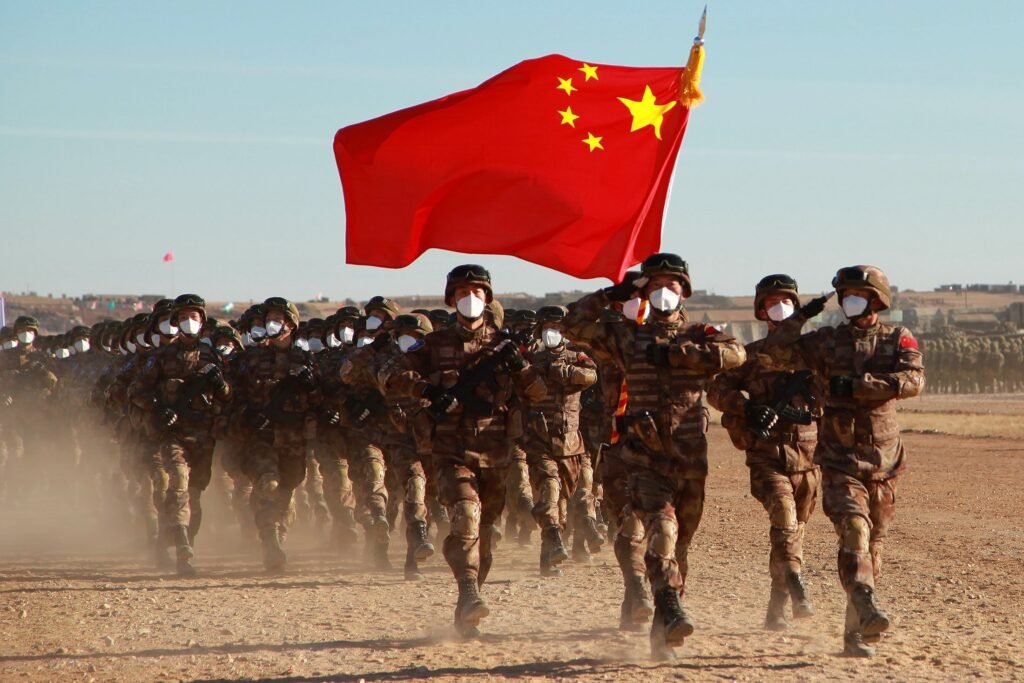
Conclusion:
As we’ve seen, the world’s top military powers in 2025 represent a diverse array of capabilities, strategies, and geopolitical contexts. While traditional measures of military strength – such as troop numbers, equipment, and defense budgets – remain important, the increasing role of technology is reshaping the nature of military power.
Emerging technologies like artificial intelligence, autonomous systems, hypersonic weapons, and advanced cyber capabilities are becoming crucial factors in determining military effectiveness. Nations that can successfully integrate these technologies into their armed forces are likely.
Read More: Most Powerful Military Forces in the World
FAQs:
Q: What is the top-ranked military power in 2025 according to the Global Firepower index?
A: The United States remains the top-ranked military power in 2025 with a Power Index of 0.0744.
Q: Which emerging technology is considered the “brain behind modern warfare” in 2025?
A: Artificial Intelligence (AI) is considered the brain behind modern warfare in 2025.
Q: How are immersive technologies changing military training in 2025?
A: Immersive technologies like virtual and mixed reality are providing realistic combat simulations for more effective training without risking casualties.
Q: What role do robotics and automation play in defense systems by 2025?
A: Robotics and automation are being used for functions like scouting, supply, and support, reducing risks to human life and enhancing efficiency.
Q: Why is cyberwarfare described as the “invisible battlefield” in 2025?
A: Cyberwarfare is considered the invisible battlefield due to its ability to conduct espionage and sabotage without physical presence.
Q: What is the Internet of Military Things (IoMT) and how is it used in 2025?
A: IoMT is an interconnected network of devices that improves situational awareness, decision-making, and real-time data sharing in military operations.
Q: How is additive manufacturing (3D printing) benefiting the defense sector in 2025?
A: Additive manufacturing is used to quickly produce replacement parts, build structures, and create lighter equipment, improving logistics and reducing costs.
Q: What advancements in defense equipment are notable in 2025?
A: Notable advancements include directed energy weapons, hypersonic weapons, and progress in space militarization.
Q: How are drones impacting military operations in 2025?
A: Drones are extensively used for surveillance, precision strikes, and air defense suppression, offering low-cost but highly effective capabilities.
Q: What is the significance of quantum computing in military technology by 2025?
A: While not explicitly mentioned, quantum computing is likely to enhance cryptography, data analysis, and simulation capabilities for military applications.
Q: How is the defense industry addressing environmental concerns in 2025?
A: The industry is exploring electric propulsion and greener fuel alternatives to reduce its carbon footprint.
Q: What new development in soldier protection is mentioned for 2025?
A: Self-healing armor, developed through advancements in biotech and nanotechnology, is becoming a game-changer for soldier protection.
Q: How is AI being used in military cybersecurity in 2025?
A: AI is used to analyze network traffic, detect vulnerabilities, and respond quickly to cyber attacks.
Q: What role does predictive maintenance play in military technology by 2025?
A: Predictive maintenance, powered by AI, helps forecast equipment failures, improving readiness and reducing downtime.
Q: How are autonomous systems changing naval operations in 2025?
A: Autonomous systems are being used for undersea navigation and surveillance, enhancing naval capabilities without risking human lives.
Q: What is the primary advantage of using 3D-printed parts in military aircraft by 2025?
A: 3D-printed parts are lighter, require less material, and are less costly to produce compared to traditionally manufactured parts.
Q: How is the concept of net-zero emissions influencing military technology in 2025?
A: The push for net-zero emissions is driving research into electric propulsion and alternative fuels for military vehicles and equipment.
Q: What role do robotics play in hazardous military operations by 2025?
A: Robots are assisting in dangerous tasks such as landmine clearance and explosive ordnance disposal, reducing risks to human personnel.
Q: How is AI transforming military command and control systems in 2025?
A: AI is enabling real-time data analysis and informed decision-making in command and control systems, enhancing overall operational effectiveness.
Q: What is the primary reason for the increased use of drones in military conflicts by 2025?
A: The main reasons are their low cost of production compared to other weapons and their effectiveness in crippling enemy defenses.
